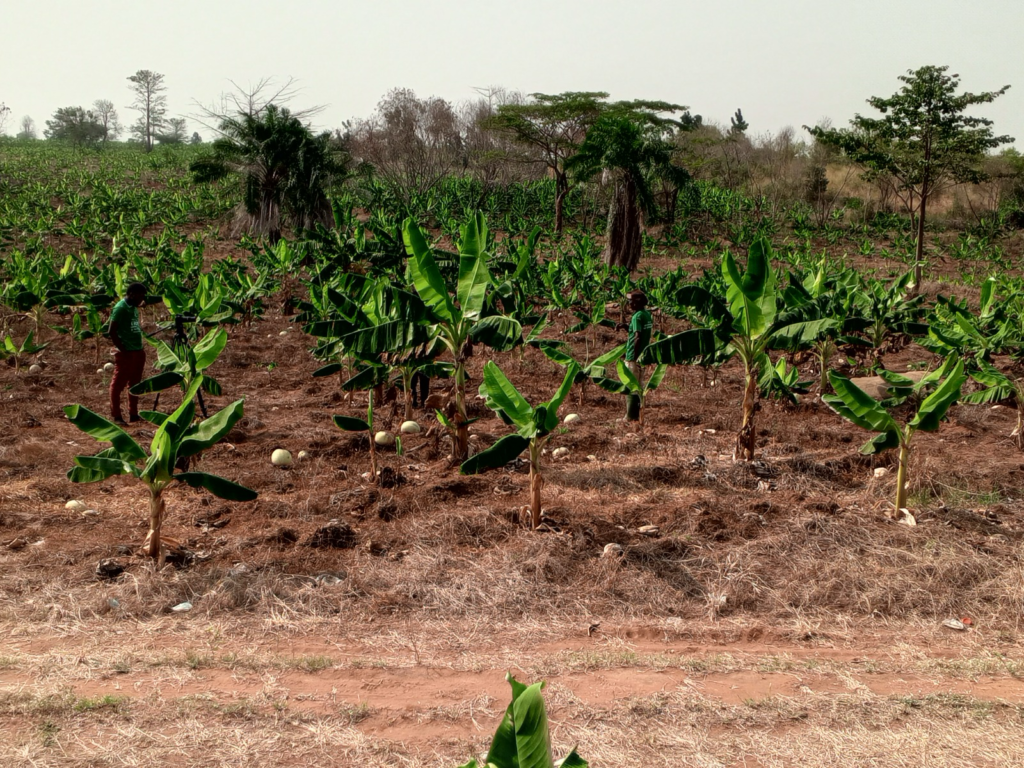There’s a regular rise within the adoption of Nature-Primarily based Options (NBS) tasks to battle the impacts of local weather change with a number of new tasks initiated has grown by a mean of 15% yearly between 2012 and 2021.
A brand new report by the World Sources Institute (WRI) and the World Financial institution, with contributions from the African Improvement Financial institution (AfDB), disclosed this.
The report recognized 297 Nature-Primarily based Options (NBS) tasks launched between 2012 and 2023, which utilised NBS both as an alternative choice to or together with conventional gray infrastructure to reinforce local weather resilience.
Nearly all of these tasks had been designed to realize a number of goals, with the commonest being enhancements in water high quality, water provide, flood mitigation, and management of abrasion and landslides.
It additionally emphasizes that regardless of the rising curiosity in Nature-Primarily based Options (NBS), better funding continues to be wanted.
Between 2012 and 2021, funding for NBS tasks in Sub-Saharan Africa elevated by 23% yearly, reaching over $12 billion.
Nonetheless, that is nonetheless considerably under the $100 billion annual infrastructure financing hole the area faces.
These tasks, which embody the safety and restoration of forests, wetlands, floodplains, and coral reefs, typically along side conventional ‘gray’ infrastructure, are enhancing local weather resilience whereas delivering co-benefits corresponding to job creation, biodiversity enchancment, and social fairness.
Mission sorts and funding dimension
To distinguish between varied mission sorts and funding sizes, the report’s authors categorized the tasks into three teams: green-grey, inexperienced, and small-scale.
These classes had been created to deal with the distinctive necessities of every mission kind, together with features corresponding to mission planning, design, implementation, technical experience, useful resource allocation, stakeholder engagement, and affect evaluation.
Small-scale tasks are usually community-driven, whereas large-scale green-grey and inexperienced tasks require complicated coordination amongst stakeholders, vital funding, and detailed planning and administration because of their dimension and affect.
Inexperienced-gray tasks made up the biggest group, with 95 tasks initiated between 2012 and 2021. These tasks secured a complete of $8.8 billion in funding, with $3.5 billion allotted particularly for NBS implementation.
Combining NBS interventions corresponding to inexperienced (e.g., forest restoration to stop landslides) or blue (e.g., coral reef restoration to cut back erosion) with gray infrastructure, these tasks averaged $108 million every, with funding starting from $1 million to $909 million. Over half of those tasks had been led by the infrastructure sectors of nationwide governments.
Inexperienced-gray tasks had been typically funded by multilateral growth banks (MDBs) and aimed to ship a variety of co-benefits, together with job creation and enhancements to public well being.
Inexperienced tasks shaped the second-largest group, with 83 tasks initiated between 2012 and 2021.
These tasks secured a complete of $3.7 billion in funding, with $1.8 billion allotted for NBS implementation.
Not like green-grey tasks, inexperienced tasks used solely inexperienced or blue NBS interventions—with out gray infrastructure—to fulfill local weather resilience targets.
Funding for inexperienced tasks ranged from $1 million to $500 million, with a mean mission dimension of $54 million.
They had been usually developed by nationwide governments’ atmosphere and pure useful resource departments and funded by multilateral donors and funds.
These tasks had been primarily designed to reinforce biodiversity and assist job creation as co-benefits.
Small-scale tasks, the third group, consisted of 67 tasks initiated between 2012 and 2021.
Twenty-one of those tasks disclosed a complete funding quantity of $6.7 million, with particular person tasks securing between $50,000 and $910,000, averaging $370,000 per mission.
NBS-specific funding couldn’t be calculated, because the tasks didn’t separate whole funding from NBS implementation prices.
These tasks primarily utilised inexperienced or blue NBS parts, with few incorporating green-gray interventions.
Funded by multilateral donors, multilateral funds, and NGOs, and developed by NGOs, these tasks centered on co-benefits corresponding to job creation and biodiversity enhancement.
The World Financial institution’s Nation Director for Kenya, Rwanda, Somalia, and Uganda, Qimiao Fan, said that the lack of nature and local weather dangers are intrinsically related, notably in Africa.
“We have to be sure that tasks and insurance policies comprehensively deal with the challenges and provide inclusive and efficient options for essentially the most weak teams.”
The report presents a number of suggestions to speed up the adoption of Nature-Primarily based Options (NBS) in Sub-Saharan Africa, which is on the frontlines of the worldwide local weather disaster.
These embody integrating nature into insurance policies and plans, enhancing technical capability to develop mission pipelines, and diversifying funding sources.
To assist the NBS funding preparation efforts of the World Financial institution and AfDB, WRI has launched the Inexperienced-Grey Infrastructure Accelerator.
This initiative goals to help 11 cities throughout Sub-Saharan Africa in integrating Nature-Primarily based Options with conventional “gray” infrastructure.
It would provide technical, coverage, and monetary assist, serving to these cities lay the muse for his or her preliminary tasks whereas additionally connecting them with financiers to scale up current efforts.
President & CEO of the World Sources Institute, Ani Dasgupta, stated the world typically views infrastructure as roads, bridges, and buildings — simply concrete and metal. However nature — forests, timber, wetlands, coral reefs — is equally important.
“It provides clear water, protects communities from disasters, and strengthens resilience. Throughout Africa, cities and communities are proving that inexperienced and gray infrastructure can work collectively to maximise advantages for individuals, nature and local weather — and the world ought to take notice.”
DISCLAIMER: The Views, Feedback, Opinions, Contributions and Statements made by Readers and Contributors on this platform don’t essentially signify the views or coverage of Multimedia Group Restricted.
Source link
